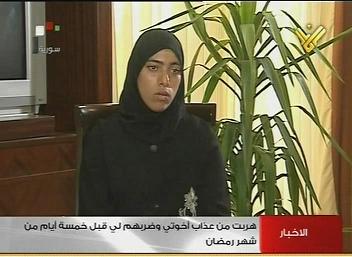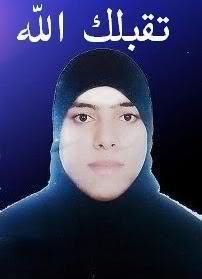After her “mutilated body” has become a symbol of the “uprising” against President Bashar Assad, Zeinab al-Hosni herself appeared on the Syrian State television to falsify the allegations.
 After her “mutilated body” has become a symbol of the “uprising” against President Bashar Assad, Zeinab al-Hosni herself appeared on the Syrian State television to falsify the allegations.
After her “mutilated body” has become a symbol of the “uprising” against President Bashar Assad, Zeinab al-Hosni herself appeared on the Syrian State television to falsify the allegations.
Flashing her identity card as proof, Zeinab said she had fled her family after her brothers were used to beat her.
However, after she “learned about her death” on TV, Zeinab decided to appear on the State Television and to say that she was still alive and her body wasn’t mutilated.
"I fled my family (in late July) because my brother beat me. My parents do not know where I am," said Zeinab.
"They do not know that I am alive. I learned about my own death on television channels which said the Syrian security forces detained me, and burned and cut up my body," she added.
 Both, Amnesty International and Human Rights Watch had issued statements in September denouncing the alleged murder of the 18-year-old, whose body they said had been discovered in a morgue by her mother.
Both, Amnesty International and Human Rights Watch had issued statements in September denouncing the alleged murder of the 18-year-old, whose body they said had been discovered in a morgue by her mother.
"Zeinab had been decapitated, her arms cut off, and skin removed," the London-based watchdog said in a statement, adding she was the "first woman known to have died in custody during Syria's recent unrest."
The New York-based Human Rights Watch had said Zeinab al-Hosni vanished in late July and that the Syrian authorities returned her "dismembered body" to her family on September 17.
